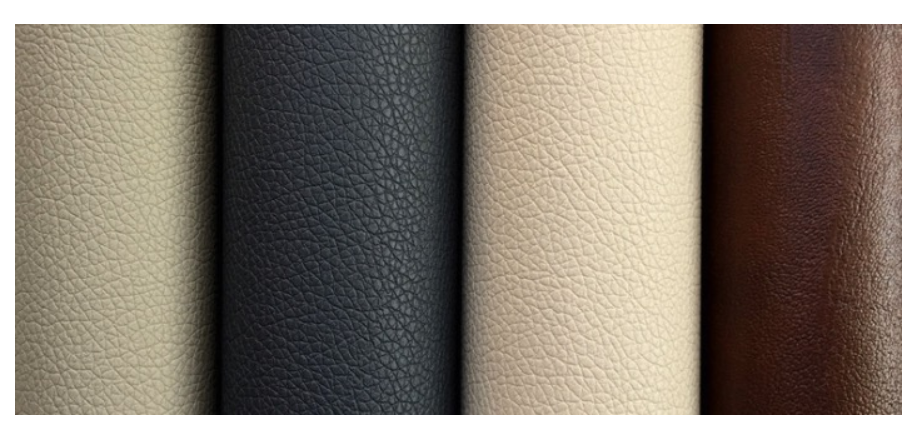The bio-based leather market has emerged as a promising segment in the global shift toward sustainability and ethical production practices. Derived from renewable resources like plants, fungi, and agricultural by-products, bio-based leather offers an eco-friendly and cruelty-free alternative to traditional animal hides. With industries, especially fashion, automotive, and furniture, increasingly adopting these innovative materials, the market is set for substantial growth. This article provides an in-depth overview of the bio-based leather market, exploring current trends, growth drivers, and key industry insights.
Market Overview
Bio-based leather refers to materials that replicate the qualities of traditional leather but are made from sustainable and renewable sources. These alternatives include materials like Piñatex (made from pineapple leaves), Mylo (derived from mycelium), Desserto (cactus-based leather), and many others. These products cater to industries aiming to meet sustainability goals and provide consumers with cruelty-free, eco-friendly options. As global awareness about environmental issues increases, so does the demand for bio-based leather, positioning it as a key component of the future of material innovation.
Trends Shaping the Bio-Based Leather Market
-
Sustainability and Ethical Production: Consumers and industries alike are prioritizing sustainability. Bio-based leather is emerging as an ideal solution for manufacturers looking to reduce their environmental footprint. This material uses fewer resources in production, often requiring less water and energy compared to traditional leather manufacturing. Moreover, bio-based leather is biodegradable, contributing to the reduction of landfill waste and mitigating environmental impact.
-
Technological Innovation: The bio-based leather sector has witnessed significant advancements in material science. Innovations such as mycelium-based leathers and pineapple leaf-derived Piñatex have proven to be durable, lightweight, and versatile, offering comparable functionality and aesthetics to traditional leather. With continuous improvements in technology, bio-based leathers are becoming increasingly suitable for high-end applications in fashion, automotive, and upholstery.
-
Circular Economy and Waste Reduction: Many bio-based leather manufacturers emphasize the concept of a circular economy, focusing on waste reduction and the reuse of by-products. For example, materials like TômTex, made from seafood shell waste and mushrooms, contribute to sustainability by utilizing agricultural and industrial waste that would otherwise end up in landfills. This approach aligns with growing trends toward sustainable production methods that minimize waste.
-
Regulatory Support and Industry Collaboration: Governments around the world are introducing policies and incentives to encourage the adoption of sustainable materials. This regulatory support is crucial in driving the growth of the bio-based leather market. Furthermore, collaborations between bio-based leather manufacturers and major global brands, particularly in the fashion and automotive industries, are accelerating innovation and expanding the market reach.
Growth Drivers of the Bio-Based Leather Market
-
Increasing Demand for Sustainable and Ethical Products: As consumer preferences shift toward sustainability, the demand for bio-based leather is surging. Eco-conscious buyers are increasingly looking for products made from renewable resources, with a focus on reducing harm to animals and the environment. Bio-based leather provides a solution that meets both consumer values and environmental needs.
-
Technological Advancements in Bio-Based Materials: Significant advancements in biotechnology and material science have enabled manufacturers to develop bio-based leathers with enhanced durability, aesthetic appeal, and functionality. These improvements have expanded the scope of applications for bio-based leathers, making them viable for use in high-performance sectors such as automotive interiors, luxury fashion, and industrial products.
-
Global Focus on Carbon Reduction: The global push for carbon neutrality is driving industries to explore alternative materials with a lower carbon footprint. Bio-based leather, with its reduced environmental impact compared to conventional leather, has gained attention as a sustainable material in the race to cut down carbon emissions in manufacturing processes.
Key Industry Insights
-
Key Players in the Bio-Based Leather Market: Several innovative companies are driving growth in the bio-based leather market. Notable players include Modern Meadow, which specializes in biofabricated leather using collagen proteins; MycoWorks, a leader in mycelium-based leathers; and Ananas Anam, known for Piñatex made from pineapple leaf fibers. Other companies like Desserto and TômTex are also making significant contributions with cactus and mushroom-based leathers.
-
Sector Applications: The fashion industry is the largest adopter of bio-based leather, with applications in shoes, bags, and accessories. The automotive sector is also exploring the use of bio-based leathers for vehicle upholstery, while the furniture industry is incorporating these materials into eco-friendly furniture designs. As the technology advances and production costs decrease, bio-based leather is expected to penetrate even more industries.
-
Regional Insights: North America currently leads the bio-based leather market, with a strong presence of key players and significant consumer demand for sustainable products. However, Europe is expected to show rapid growth during the forecast period, driven by robust regulatory frameworks and an increasing number of eco-conscious consumers.
Challenges Facing the Bio-Based Leather Market
While the bio-based leather market has significant potential, it faces challenges such as high production costs, limited raw material availability, and performance concerns in certain applications. Bio-based leathers may not yet match the durability and strength of traditional leather in some high-demand sectors, such as heavy-duty automotive interiors. However, ongoing innovations in material science are expected to address these limitations.
Conclusion
The bio-based leather market is poised for remarkable growth, fueled by sustainability trends, technological advancements, and the increasing demand for ethical products. As industries continue to embrace these materials, the market is set to expand, offering a wide range of applications across various sectors. Despite challenges, the future of bio-based leather looks promising, with key players driving innovations that are reshaping the material landscape. In the coming years, bio-based leather is expected to become a mainstream material, contributing to a more sustainable and ethical future in manufacturing and consumer products.



